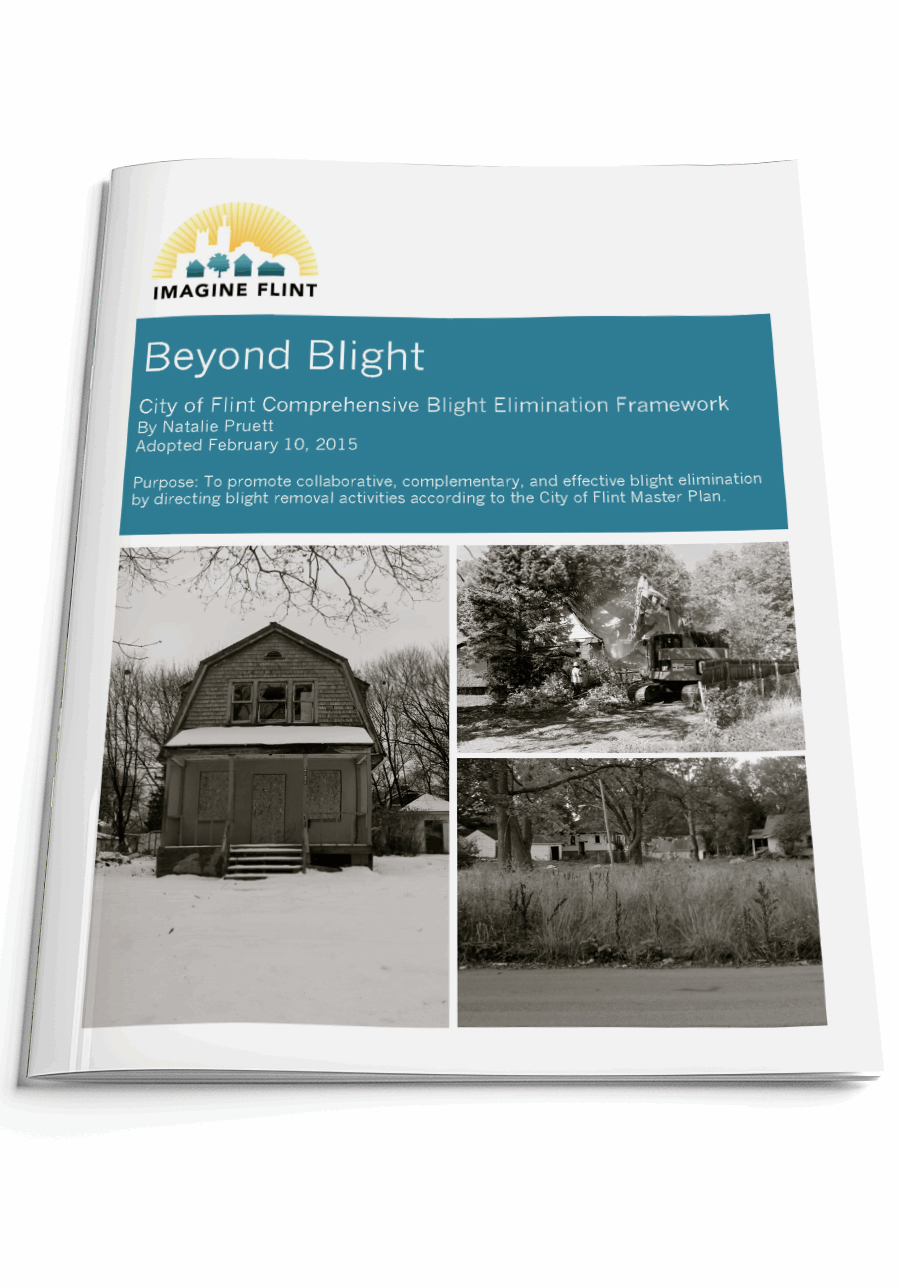Beyond Blight
City of Flint Comprehensive Blight Elimination Framework
Published: September 2015
Geography: Michigan
Author(s): Center for Community Progress
In 2015, in support of the City of Flint’s efforts, Community Progress provided critical input into the framing and development of the Comprehensive Blight Elimination Framework, which laid out clear, actionable priorities for effective waste removal, property boarding, demolition, mowing, vacant lot reuse, building rehabilitation, and code enforcement.
Flint is faced with challenges around the presence and prevalence of blight within its city limits. As it is the case in other cities today, a decrease in Flint’s population has generated an abundance of vacant and abandoned properties. Blight is often found on these properties, including dilapidated buildings, dumped debris, and unmaintained vegetation. While blight exists in many cities, the scale of blight in Flint is exceptional.
In 2015, there were roughly 22,000 vacant properties in Flint, representing more than one-third of all property in the city. The cost of needed demolition alone was estimated to be $71.88 million over the next five years with annual blight removal costs totaling more than $7 million. The majority of blighted properties were privately owned.
As it has become commonplace for vacant property owners to abandon property maintenance, local government, institutions, and residents have essentially assumed the responsibility of removing the increasing accumulation of blight in Flint. Their past efforts have successfully mitigated blight. However, given the magnitude of blight in Flint and all of it costs, there is a need for a strategic and coordinated citywide approach to blight removal.
The challenges associated with blight elimination are not unique to blight but are symptomatic of the drastic change in Flint’s landscape. The combination of decreasing population, increasing public costs, and decreasing government revenue strains and threatens the quality of life for Flint, its residents, institutions, business owners, and community members. It is amidst this context that the Imagine Flint Master Plan for a Sustainable Flint was created.
On October 28, 2013, Flint City Council unanimously adopted the City’s first official comprehensive master plan in over 50 years. The Master Plan provides a 20-year vision for Flint and an organizing catalyst for responding to its changing circumstances. Strong community engagement guided the planning process and created a community vision that represents the desires and decisions of the Flint community. The need for neighborhood stabilization emerged as an immediate priority during the planning process. Thus, the Master Plan includes guidance on addressing blight and actually calls for the creation of a comprehensive blight elimination plan. While previous blight removal efforts operated in the absence of a unified citywide plan, the Master Plan offers a Framework for removing blight with increased coordination and strategy. Not only does the Master Plan present an opportunity to coordinate multiple blight removal activities by multiple actors, but also an opportunity to align blight removal with other redevelopment and revitalization efforts.
Thus, there was a need for a comprehensive Framework that will promote collaborative, complementary and effective blight elimination in Flint. This Comprehensive Framework for Five Year Blight Elimination, drawing upon the Master Plan, works to that end. This Framework uses the Master Plan place types to provide direction for blight removal, which can be used by institutions, residents, business owners, public officials, and the entire Flint community.
Subscribe to join 14,000 community development leaders getting the latest resources from top experts on vacant property revitalization.

